How to Create a Winning Customer Engagement Strategy
We walk through everything you need to know to create a successful customer engagement strategy.
What is a customer engagement strategy?
A customer engagement strategy is a plan for creating an ongoing positive experience that keeps customers coming back to your product or service. Your plan will include the actions you’ll take, and the resources needed to implement them.
You need a customer engagement strategy because, in a competitive landscape, experience is the differentiating factor. You most likely have rivals offering the same thing you do, and it’s very easy for customers to find alternatives.
Before we go any further, let’s clear up one common thing: customer engagement is not the same thing as marketing gimmicks. They’re easy to confuse because both involve creating positive experiences. The difference is in the results they achieve: true customer engagement encourages loyalty, while marketing is directly designed to drive sales.
Customer engagement is about making it easy for customers to do business with you by reducing the effort they need to exert to resolve problems with your product or service. Gartner calls this “effortless experience.” One survey found that 96% of customers who have to exert high effort to resolve an issue report being disloyal to a brand, while only 9% of customers with low-effort experiences did so.
Imagine it’s your team’s first week using a project management tool, and you’re not sure how to map out your workflow on it. As new users, you’re automatically enrolled in a product tutorial. You have access to one-to-one consultation and templates made by other businesses. You can ask questions through live chat and on an active community forum. It takes you little effort to get the help you need.
Now imagine those support channels don’t exist. All you get are an FAQ page and an email address for customer support. You slog on your own to find a solution. At that point, you’d be seriously considering another tool, especially if you’re on a free trial or have paid very little for a basic plan. Never mind that the company welcomed you with a cool avatar or dazzled you with their dashboard aesthetics. Those small delights don’t justify the effort you had to exert.
That’s not to say you can’t weave enjoyable experiences into your customer engagement strategy – you definitely should. Just make sure you’ve solved (or prevented) the customer’s pain points first.
Increase customer engagement with these 7 winning strategies
An effective customer engagement strategy identifies goals and actions for different stages of the customer journey. A good way to start coming up with ideas would be to begin with the moment just after they convert, then work your way forward from there.
1. Identify metrics for engagement
Customer engagement metrics measure the quality and frequency of customers’ interactions with your company. The metrics are not end goals in themselves – rather, they guide you in creating engagement activities and in tracking progress toward your business goals.
To capture a new market, you’d want to win as many users as possible, learn what features they like the most, and get them to spread the word about your product. So you’d want to track active users, feature usage, and Net Promoter Score.
If you want to increase revenue from existing customers, you’d track customer lifetime value and keep an eye on opt-out metrics to spot disengaged customers and win them back before they churn.
But don’t forget to look beyond the numbers to find the human stories they tell. You want to know why customers do what they do – why they use this feature, why they’ve stopped reading your newsletter. That’s why you need to pair metrics with qualitative data from interviews, discussion groups, chats, forums, and surveys.
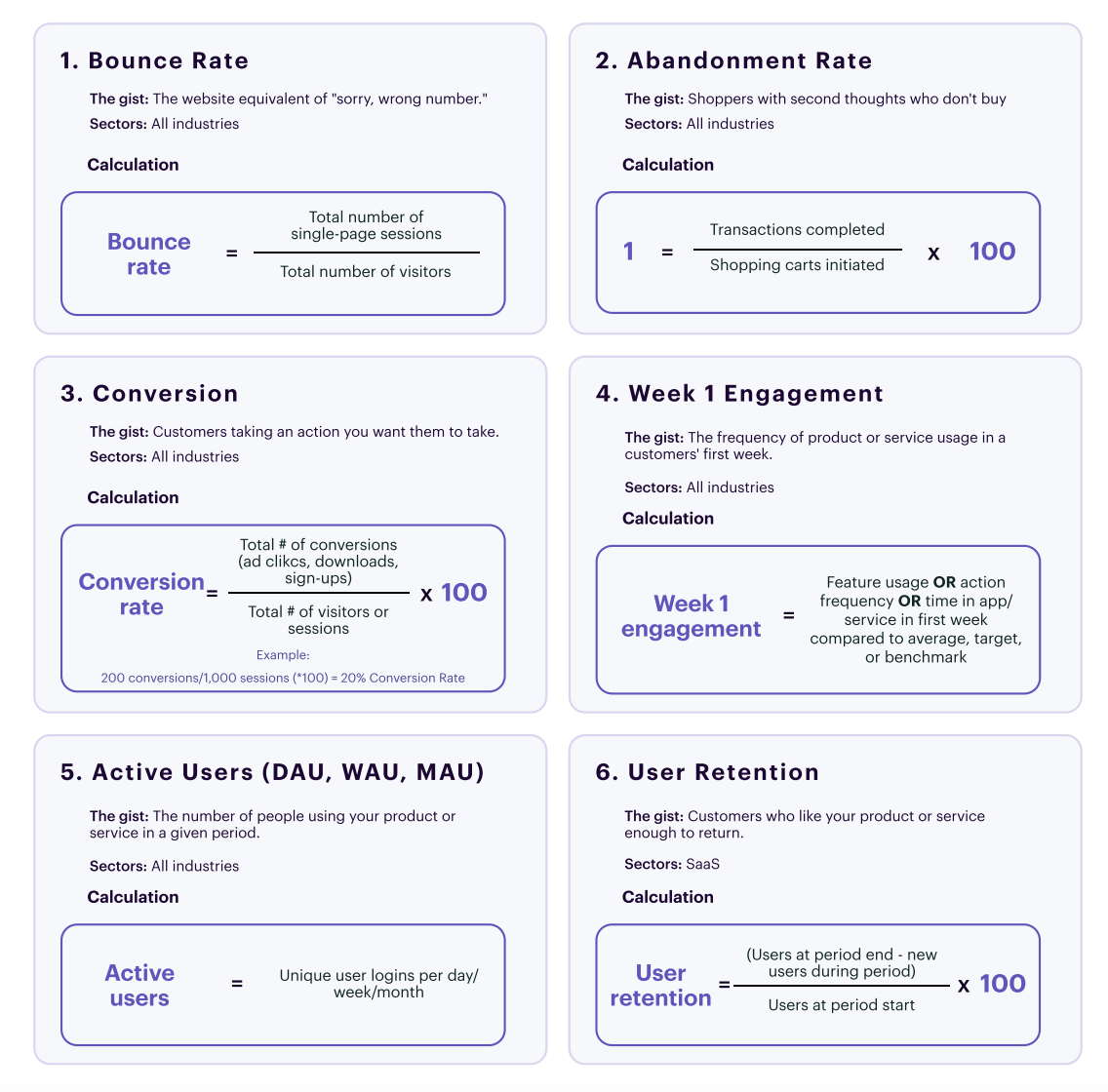
Looking for more guidance on which metrics to examine? Check out the 11 Customer Engagement Metrics You Should Be Tracking.
2. Leverage tools to track engagement
Metrics depend on accurate, valid data. To track customer engagement metrics, you need, at the very least:
Data collection tools — This includes tools for data ingestion, processing, and storage, as well as cleansing and validation. Your data pipeline should be capable of collecting data from all your customer engagement channels, like your website, customer support chats, and email campaigns. Learn more in our complete introduction to data collection.
Analytics platform — Configure your analytics platform to track the metrics you’ve chosen so you can gain insights from the data you’ve collected. An analytics platform will also reveal broad trends across your data.
Customer segmentation tools — Every product or service has more than one type of customer. A customer segmentation tool lets you identify these customer groups so you can run different engagement campaigns for each one. For example, you’d have a group of customers that meet the criteria for potential churn, another group composed of top promoters of your brand, and more.
3. Focus on onboarding
The onboarding period is a crucial part of any customer engagement strategy because it’s when users decide whether they want to keep using your product or try an alternative.
Here are some ideas for engaging customers during the onboarding period:
Personalize the onboarding process based on actions the user has completed. When PagerDuty, an incident management platform, rolled out tailored onboarding for all its users, it saw a 178% increase in mobile app downloads by free trial users.
Supplement your onboarding process with free educational resources. Anchor (by Spotify) does this well for its podcasters by writing blogs that solve a single, specific problem – like how to write episode descriptions or how to decide on a podcast subscription price. By essentially solving one question per article, Anchor makes it easier for customers to find the advice they need without having to scroll through paragraphs of irrelevant information.
Create an onboarding email sequence to tie together all your onboarding processes. Use marketing automation to scale this step and a customer data platform (CDP) to personalize the messages you send.
4. Communicate updates and new features
Social media, blogs, email, PR, push notifications – you have so many potential channels for communicating updates and new features that there’s no excuse not to do it. When you announce them, remember to focus on the value users will get. Talk about how the update or product will improve their experience (and pick a channel that the customer has known to use frequently).
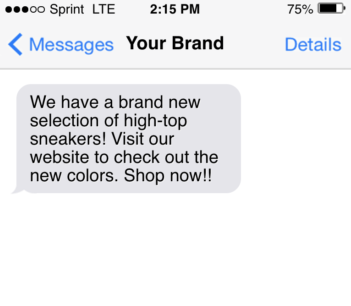
5. Offer multiple channels for customer support
Customers ask for help in different ways based on their preferences and circumstances. Some problems need an immediate solution, for which you can offer live chat support or a phone number to call. At other times, an email or an FAQ directory will suffice.
The key is to reduce the effort the customer must exert to resolve their problem – so provide more than one channel for customer support and make it easy to access these channels from the dashboard, sidebar, or menu. This way, customers can also choose their preferred channel for reaching out.
And if you analyze and unify customer data in real time, you can also provide proactive customer support by anticipating their needs and questions.
6. Optimize your outreach cadence
A crucial part of customer engagement is understanding how people want to interact with your brand – and a savvy marketing strategy is understanding the optimal times for outreach.
Businesses can hone their outreach cadences with the help of data. For instance, companies can create specific audiences based on relative date ranges, and tailor their communications to reflect specific milestones. This can range from sending out reminders (e.g., time to schedule a doctor’s appointment, a contract renewal is coming up) to more personalized messages that correspond to life events (e.g., birthdays, progress with an online course, etc.).
You can also use cohort analysis to understand the behavior of your most engaged customers (and your least). Using this data, you can start to identify people that are most likely to become high-value customers, versus those that are churn risks (and intervene accordingly). For instance, using Twilio Engage you can identify the optimal time to ask users for a referral to bring in new customers.
7. Experiment, experiment, experiment
Experimentation is a great way to gain more insights into what’s working when it comes to customer engagement – and how to continuously iterate and improve upon your strategy.
One example of this is with A/B testing subject lines on emails to see how it impacts open rates. Even something like including emojis can influence whether or not your subject line is catchy enough to pique someone’s interest (but you won’t know for sure unless you have the data to back it up).
Vista, a design and marketing firm, is another example of successful experimentation. They were experiencing a drop in customer satisfaction rates following the launch of a new website in the UK. So, the team decided to run a series of A/B tests to make their homepage more personalized to returning users. Part of the experiment included a dashboard at the top of their homepage which presented information on placed orders in a visually appealing way. The results? A 121% increase in click-through rate from the dashboard, and higher satisfaction rates.
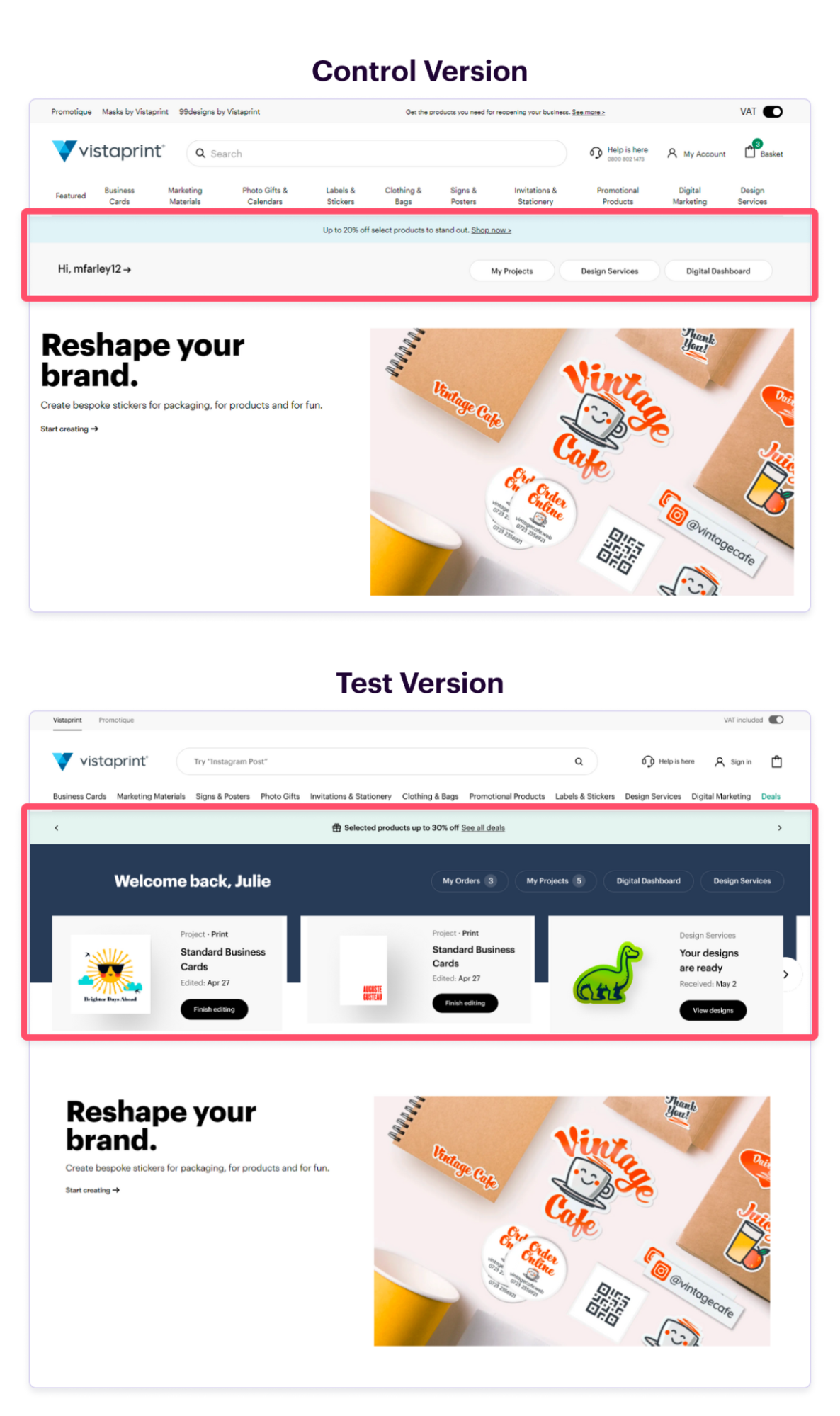
3 examples of customer engagement strategies from top companies
Now that we’ve covered the best practices for customer engagement, let’s dive into real-life success stories. Below, we highlight three different businesses and the tactics they used to strengthen engagement rates.
SendGrid
You know you’ve given your customers an effortless experience when they describe it as “a no-brainer to use.” That’s what Gusto, a payroll platform, said about Twilio SendGrid, a B2B email service provider. SendGrid is designed as a self-service platform so that its users – marketers with little to no coding skills – don’t need to ask the engineering team to help manage email workflows.
While that’s helpful for small teams, larger customers have dedicated engineering and development resources and want to do more complicated things with email. SendGrid offers many APIs so companies can build their own systems. eBay, for instance, built its own targeting and personalization CRM system on top of SendGrid to send personalized emails based on real-time customer data.
Spotify
Spotify gives its users a sense of community by letting them share playlists with friends. When they realized that friends also want to build playlists together, Spotify launched Blend, a feature that automatically creates and updates a shared playlist based on the common listening history of two people.
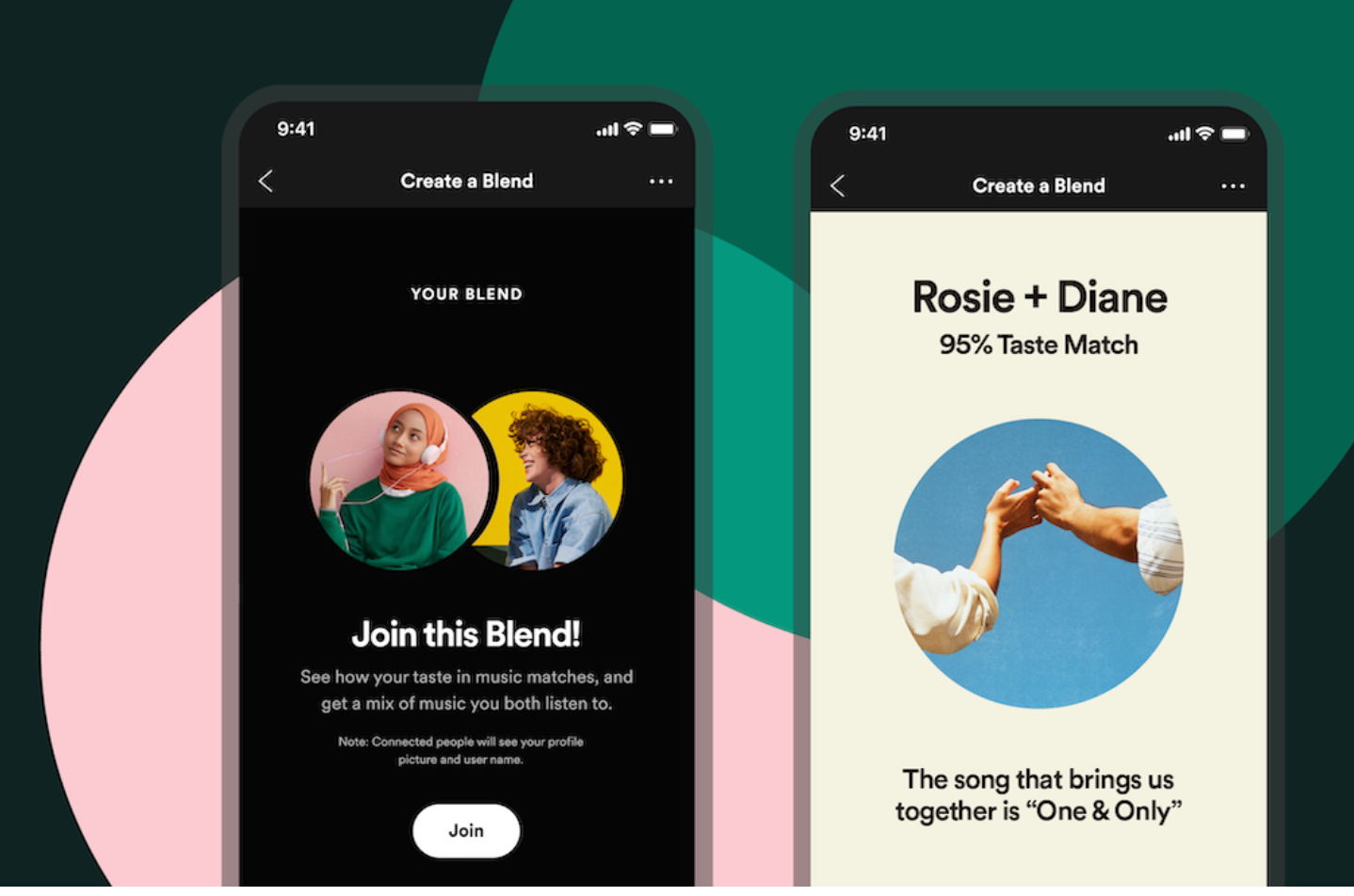
Warby Parker
Online shoppers want to know if a product fits them well without having to leave their seats. Warby Parker solves this problem with an in-app augmented reality try-on feature for its eyewear.
But for some customers, virtual fitting just won’t do. So Warby Parker also lets them pick five frames and mails the frames to them to try on for five days, for free.
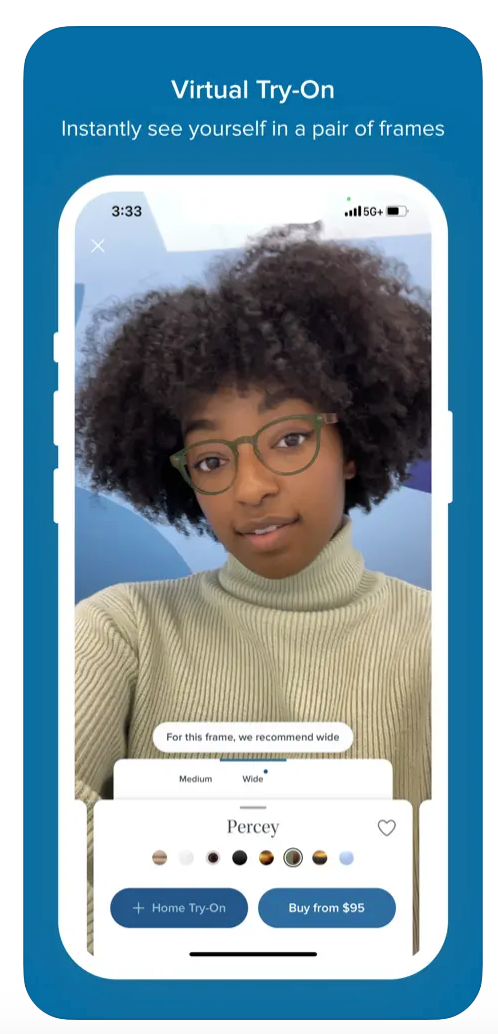
Twilio Engage unlocks unlimited customer engagement potential
Twilio Engage helps businesses reach their full potential when it comes to customer engagement. First, it provides the data foundation needed for cutting edge engagement (from unified customer profiles to real-time updates, and data accuracy at scale). Second, it ensures businesses can act on this consolidated data to reach users on the channels they prefer. Below, we list a few ways that Twilio Engage supercharges a customer engagement strategy.
Engage with customers across every channel
Twilio Engage helps businesses engage with customers on every channel. While it comes with native email and SMS, Engage also offers hundreds of integrations so businesses can tailor their communications strategy to their specific needs.
Because Engage is powered by real-time data, businesses can also respond to customers in the moment ( not after the fact, when it’s likely too late). In fact, teams can orchestrate multi-step customer journeys that adapt to real-time customer behavior, allowing businesses to personalize experiences at scale.
Leverage unified customer profiles for top-tier personalization
Having a holistic view of your customers is essential for personalization. With unified customer profiles, businesses are able to see a person’s entire history with their brand.
For example, Allergan used Twilio Engage to understand the type of content each visitor was most drawn to, and recommend relevant treatments based on those known interests. The team even created an audience for users who had searched for providers but hadn’t yet committed, and sent them unique coupons to encourage a conversion. This resulted in better engagement, more cross-sell opportunities, and better customer journeys – which culminated in over 400 million in sales year-to-date.
Interested in hearing more about how Segment can help you?
Connect with a Segment expert who can share more about what Segment can do for you.